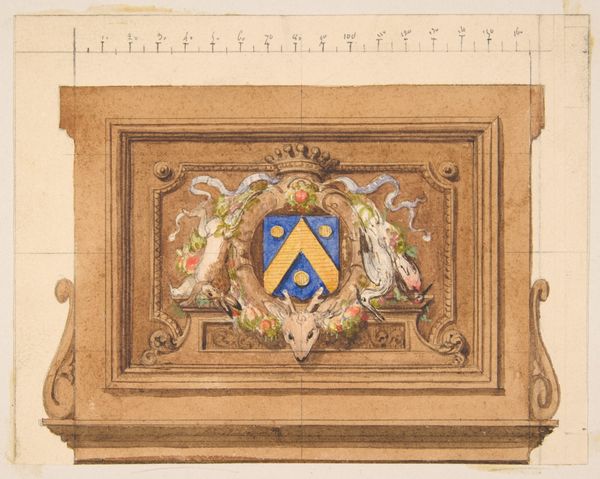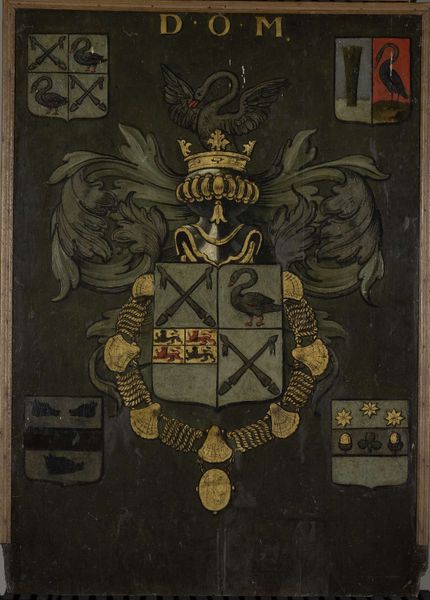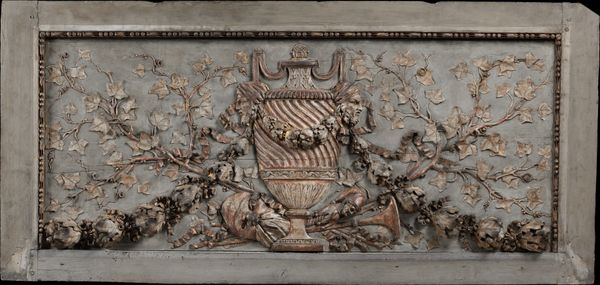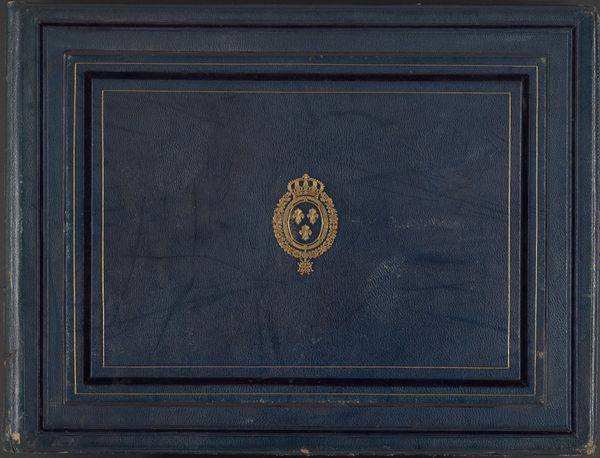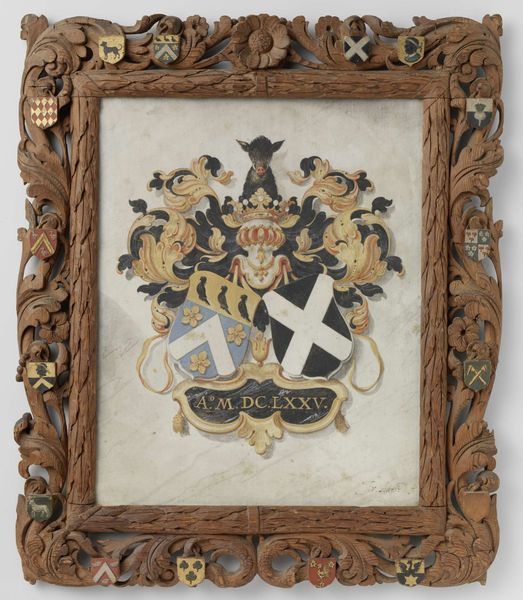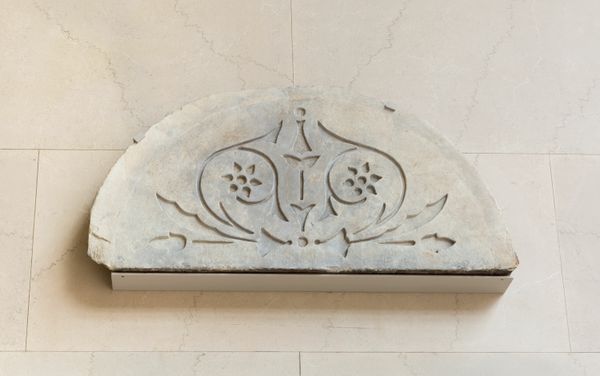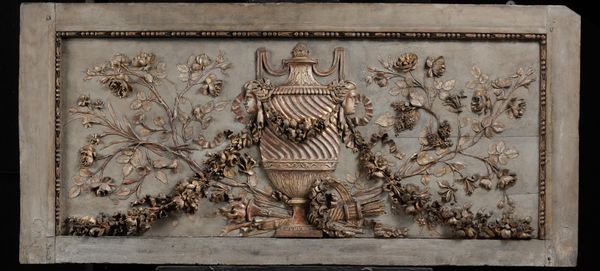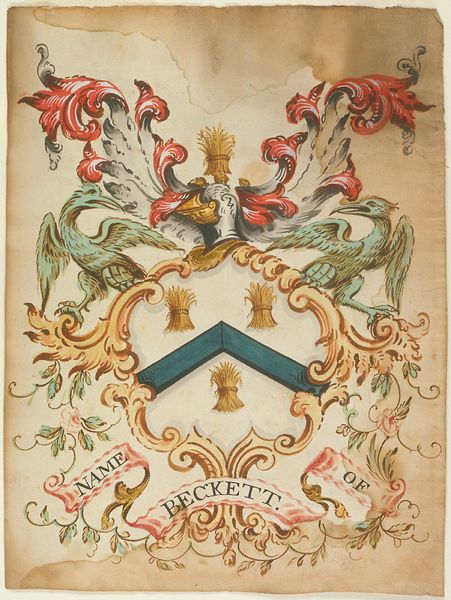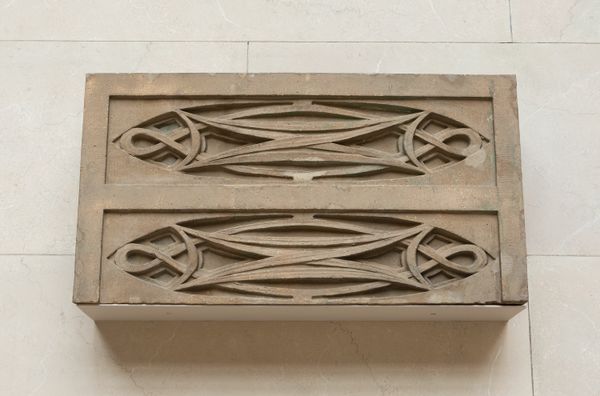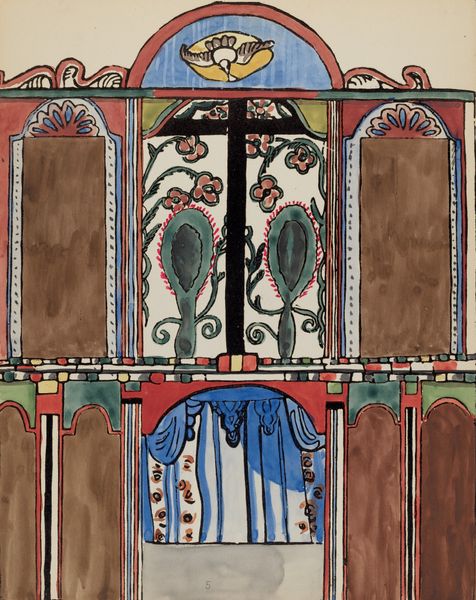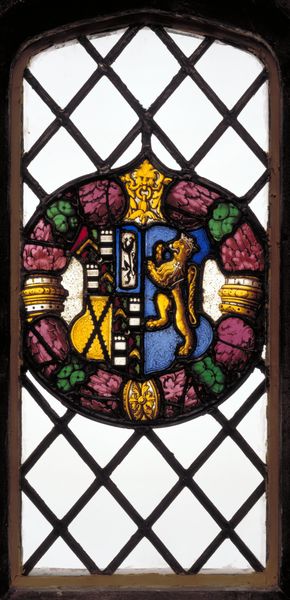
Two Wings of a Triptych with the Portraits of Julien de Brouckere and his Wife Elisabeth Canneel 1584
0:00
0:00
panel, painting, fresco
#
portrait
#
panel
#
painting
#
fresco
#
11_renaissance
#
group-portraits
#
genre-painting
#
history-painting
#
northern-renaissance
#
realism
Dimensions: height 83 cm, width 25.5 cm, height 94.3 cm, width 33.6 cm
Copyright: Rijks Museum: Open Domain
Curator: These two panels, likely once parts of a triptych, showcase portraits of Julien de Brouckere and his wife, Elisabeth Canneel. Painted anonymously around 1584, they offer a glimpse into the lives of a couple during the Northern Renaissance. Editor: My first thought? Dignified melancholy. The somber tones, the formal poses… It's like peering through a window into a world where gravity held more sway. Curator: Absolutely. Consider how the composition emphasizes balance. Each figure is framed by a landscape on one side, with their respective coat of arms on the adjoining panel, creating a symmetrical harmony. The stark black backgrounds further isolate the subjects. Editor: And those coats of arms! They're like little puzzles. I wonder about the stories they tell—the family histories, the aspirations, even the little dog! The level of detail is remarkable, almost obsessive. The portraits, meanwhile, strive for such an earnest, straightforward realism. It's that Northern Renaissance knack, isn't it? Unflinching. Curator: Yes, realism was valued highly. Look closely, and you'll notice the texture of the fabrics, the light reflecting on their faces, all rendered with meticulous detail, each panel reflecting the couple as if they had commissioned it for a very intimate gathering. Editor: The dark palette is interesting. It really focuses you on the faces and the hands—gestures of devotion and prayer. Maybe the landscapes hint at a longing for something more than what's immediately visible? I get the impression the background scenes hold promise and perhaps serve as counterpoints to the couple's austere garments and restrained affect. Curator: Perhaps. And in that somber realism there is a universal elegance—a reflection on mortality and remembrance that still resonates across the ages. Editor: You’re right. Despite all the conventions, they come across as very, well… human. Curator: Well, considering that this comes from a triptych originally intended for personal devotion, I’d say its impact is very effective at engaging the viewers directly. Editor: Yes, now I will hold this pair a little closer in my memory as I stroll to our next stop. Thanks!
Comments
No comments
Be the first to comment and join the conversation on the ultimate creative platform.
